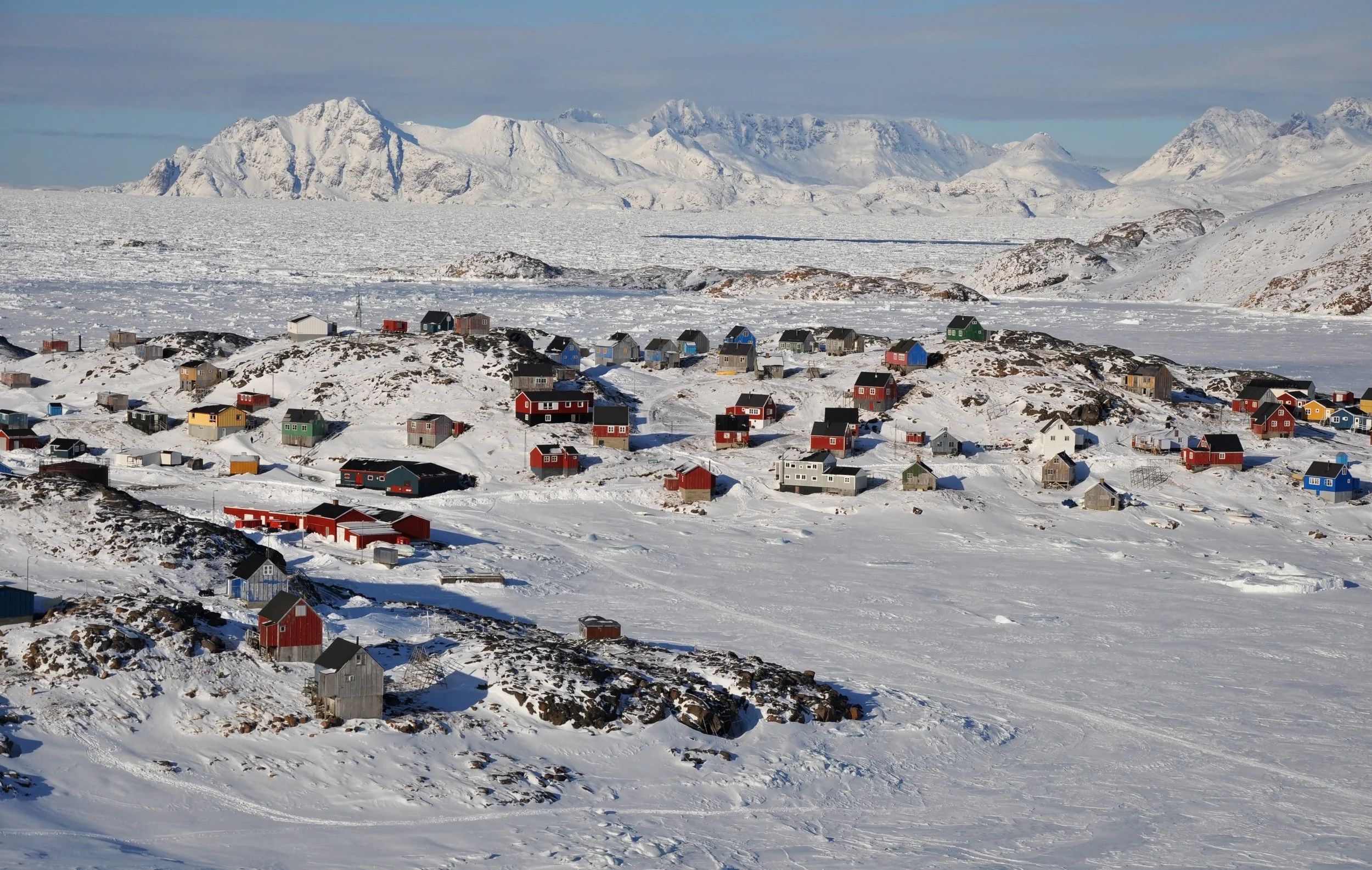Arctic Communities at Risk
Polar Bear carcass, Kaktovik, AK. Longer waits on land for sea ice causes human/bear conflicts as bears come into town in search of food.
Many indigenous communities of the Arctic depend primarily on subsistence harvesting from the land and sea. The species mostly harvested are marine mammals such as bowhead whales, seals, and walrus; land mammals such as caribou, reindeer, moose, and musk ox; fish such as salmon, Arctic tar, and a variety of birds, including ducks, and geese. Subsistence hunting is part of the cultural identity of many northern peoples, and for some, an essential part of their livelihoods. People hunt to maintain a strong connection to the environment through hunting, herding, fishing, and gathering. Other foods are often less healthy than traditional foods, and too expensive for people to buy. Native hunters have noticed the thinning of sea ice, a reduction in the numbers of seals in some areas, and the appearance of large mammals, insects and birds not usually found in their region. The Arctic is becoming an environment at risk. Sea ice is less stable, unusual weather patterns are occurring, particular animals are no longer found in traditional hunting areas during specific seasons, and vegetation cover is changing. Elevated ultraviolet radiation levels will affect people, plants, and animals. Local landscapes, seascapes, and ice-scapes are becoming unfamiliar, making people feel like strangers in their own land.
Dangers for the People and Wildlife
Kaktovik is a tiny village on the northern edge of the 20-million-acre Arctic National Wildlife Refuge on the small island called Barter Island. Kaktovik is on the north shore of Barter Island, between the Okpilak and Jago River on the Beaufort Sea coast. With the loss of sea ice, bears are being forced to come ashore in search of food. The bears have not gained the weight they would have done previously from hunting seals on the ice. As a result, they are often seen starving in search of little to no food and wandering into town which is dangerous not just for the people but for the polar bears also as if they get too close they will be shot. Polar bears wandering into the small town proved to be such a problem that the town started a polar bear patrol. Interactions between polar bears and humans are common. This year there are about 30 bears in the vicinity of the village. Kaktovik’s ex-Mayor, Nora Jane Burns stated “Last year there were more than 60 polar bears. It was hell”. “They were coming in every night. They were relentless. It’s scary. Sometimes they will linger around until 8 o’clock, and then you have kids walking to school.”
Caribou, Beluga Whale, Bowhead Whale, and Bearded Seal meatt to get through the winter.
Caribou Carcass
Polar Bear Carcass: Longer waits on land for sea ice causes human/bear conflicts as bears come into town in search of food.
Bowhead Whale Carcass
Kaktovik, AK. As permafrost melts and sea levels rise, communities like Kaktovik and Utqiaġvik could disappear.




